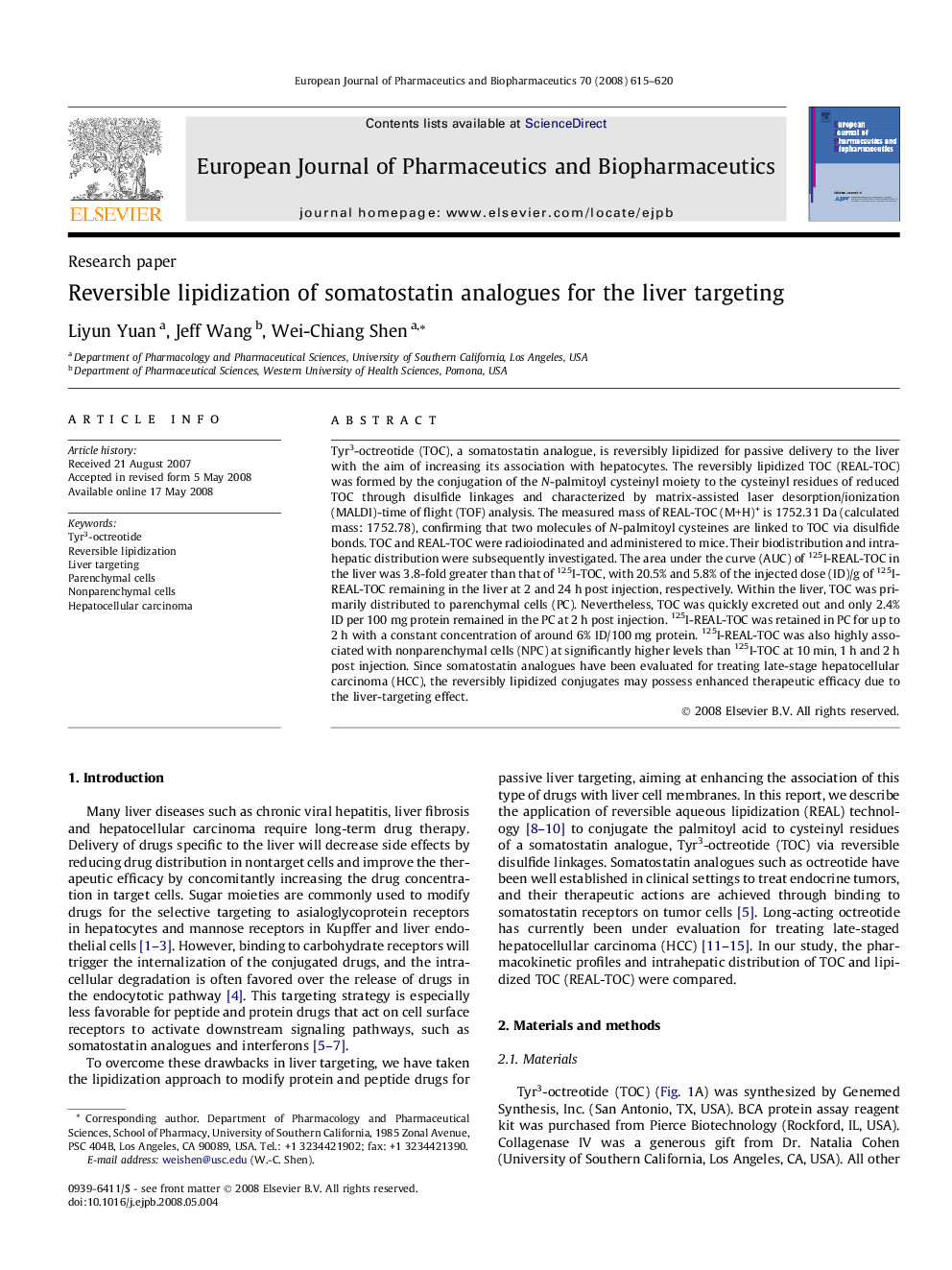| Article ID | Journal | Published Year | Pages | File Type |
|---|---|---|---|---|
| 2084573 | European Journal of Pharmaceutics and Biopharmaceutics | 2008 | 6 Pages |
Tyr3-octreotide (TOC), a somatostatin analogue, is reversibly lipidized for passive delivery to the liver with the aim of increasing its association with hepatocytes. The reversibly lipidized TOC (REAL-TOC) was formed by the conjugation of the N-palmitoyl cysteinyl moiety to the cysteinyl residues of reduced TOC through disulfide linkages and characterized by matrix-assisted laser desorption/ionization (MALDI)-time of flight (TOF) analysis. The measured mass of REAL-TOC (M+H)+ is 1752.31 Da (calculated mass: 1752.78), confirming that two molecules of N-palmitoyl cysteines are linked to TOC via disulfide bonds. TOC and REAL-TOC were radioiodinated and administered to mice. Their biodistribution and intrahepatic distribution were subsequently investigated. The area under the curve (AUC) of 125I-REAL-TOC in the liver was 3.8-fold greater than that of 125I-TOC, with 20.5% and 5.8% of the injected dose (ID)/g of 125I-REAL-TOC remaining in the liver at 2 and 24 h post injection, respectively. Within the liver, TOC was primarily distributed to parenchymal cells (PC). Nevertheless, TOC was quickly excreted out and only 2.4% ID per 100 mg protein remained in the PC at 2 h post injection. 125I-REAL-TOC was retained in PC for up to 2 h with a constant concentration of around 6% ID/100 mg protein. 125I-REAL-TOC was also highly associated with nonparenchymal cells (NPC) at significantly higher levels than 125I-TOC at 10 min, 1 h and 2 h post injection. Since somatostatin analogues have been evaluated for treating late-stage hepatocellular carcinoma (HCC), the reversibly lipidized conjugates may possess enhanced therapeutic efficacy due to the liver-targeting effect.
